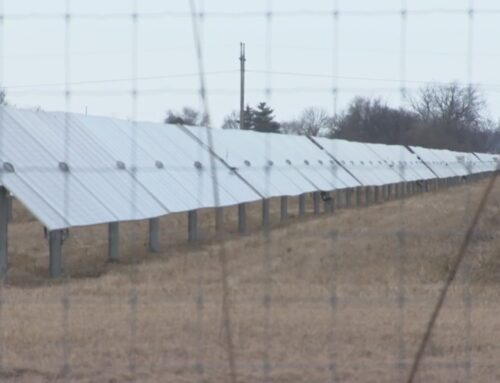People Using Apps Like iNaturalist and Merlin Are Helping Fuel Scientific Discovery
June 6, 2025
In April, more than 100,000 people from nearly 700 cities around the world set out on a mission to document as many plants and animals as they could in their urban environments.
The early results from this effort are in: Participants made more than 3.3 million observations of over 73,000 species, thousands of which are endangered.
The “City Nature Challenge” was coordinated by the nonprofit iNaturalist, which runs an app that allows users to snap a picture of a critter or vegetation in nature and upload it to a global system that will help with its identification. Together, the findings resemble a digital zoo; one participant in South Africa captured a photo of a web-like pretzel slime mold wrapping around a tree, while a user in the Philippines catalogued a hawksbill sea turtle resting in the sand.
This is part of a broader mission from iNaturalist and other nature-centric citizen science apps such as eBird and Zooniverse to help engage people in nature conservation while beefing up the availability of data on the world’s flora and fauna. Experts say this crowdsourced biodiversity information could help track shifts driven by climate change and fill in certain gaps as science faces widespread attacks from governments around the world.
A Citizen Science Brigade: A few weeks ago, I asked Today’s Climate readers to tell me about their experiences with citizen science apps in nature, and you did not disappoint! I was able to follow up with reader Michael Friedman, a scientist and avid iNaturalist user, about his passion for snapping nature pictures in an unexpected biodiversity hotspot.
“Living in New York City, you don’t think about all the diversity around you—you basically think of pigeons and rats,” he told me. Friedman is a visiting biology professor at Brooklyn’s Pratt Institute, and enjoys searching for wildlife everywhere from marshes on Long Island to Green-Wood Cemetery in Brooklyn. “I think iNaturalist has helped promote the idea of biodiversity education and biodiversity conservation—the need to protect these organisms that we’re going out and seeing in the parks, or people are looking at them in their neighborhood gardens.”
New York City alone is home to more than 7,000 species of plants and animals, including groundhogs, painted turtles and native bees. That’s not to say there aren’t also the less-appealing animals of the Big Apple—I was demonstrating iNaturalist to my brother the other day in Manhattan and the first data point we clicked on was a picture of a hulking spider that had been squashed on the street. But Friedman says that community science apps have helped engage his students, including those who aren’t studying science, in the world around them.
This type of engagement was the main motivation behind the City Nature Challenge, according to Rebecca Johnson, a researcher at the California Academy of Sciences who co-founded the event in 2016. It started as a competition between Los Angeles and San Francisco to see which city could document more nature, but has “just exploded from then,” she told me.
“It really is about not only getting people connected to and making observations of the plants and animals around where they live, but building the communities,” Johnson said.
A growing body of research finds that iNaturalist and other citizen science apps enable young individuals with limited science experience, particularly people from minority communities, to participate in environmental activities. Apps like Merlin, which allows users to record bird sounds and identify what species is making them, can also help people with hearing loss participate in birding. Some people get more into it than others: A 2021 study found that just 1 percent of the more than 1.7 million people registered with iNaturalist uploaded more than 60 percent of the observations.
“I think this is an equalizer, in a way,” Friedman said. “It gives people who may not have a college education the ability to do science, and science that’s publishable.”
Where Does the Data Go? Once you upload a high-quality picture to iNaturalist, the image is fed through an artificial intelligence system that will typically offer the first suggestion for what species it is. Volunteers from the research community will then verify it, which means it is critical to have both hobbyists and researchers participating in the process, according to a 2022 paper.
Data that is deemed “research-grade” can then be used in scientific studies. More than 4,000 studies have incorporated data from iNaturalist, along with many more that pull from other citizen science platforms, The Revelator reports. Apps like Merlin and BirdNET are also frequently used in avian research. Experts say this data can help answer conservation questions about where endangered species are located, how climate change is impacting them and how best to protect them. Hobbyist users have even helped discover new species through iNaturalist.
“There exists this technology in our pockets that just absolutely opens [the world] up. The potential is insane,” Corey Callaghan, an assistant professor of global ecology at the University of Florida, told me. “I go to conferences, and people are like, ‘Oh, what about iNaturalist data for this? Have you thought about this?’ Things that we weren’t thinking about five years ago.”
There are limitations to this approach. Analyses have shown that there are some errors in citizen science data. Timing and geographic bias can be an issue, too, because most of the app’s users live in urban areas, which is reflected in the data.
“It’s easier to go where you live than it is to go into the remote wilderness,” Callaghan said.
But a 2022 study found that researchers could successfully map the known migratory routes of several North American and European birds using BirdNET submission data. Callaghan added that submission points from citizen science apps are valuable for research on urban spaces, and have far-reaching implications for conservation policy.
When the federal government is deciding whether to move forward with major projects such as infrastructure development, energy production and land management activities, agencies are required to complete an environmental review to determine the potential impacts on nature per the National Environmental Policy Act (NEPA). A 2024 study co-authored by Callaghan found that 228 of the 1,355 environmental impact statements they analyzed from 2012 to 2022 referenced or used citizen-science data. The researchers noted that the trend became more prevalent as time went on, with 40 percent of the statements including citizen-science data in 2022.
It’s unclear how these submissions, and environmental impact assessments in general, will be used moving forward as the Trump administration moves to dismantle certain regulations surrounding NEPA, as my colleagues reported. While citizen-science data is important, Callaghan emphasized that formal scientific monitoring is crucial for consistent biodiversity monitoring that can shape policy decisions and offer insight for long-term trends.
Since President Donald Trump entered office, thousands of federal researchers who help supply this data have retired, taken buyouts or been laid off, which could disrupt research on threatened species and ecosystems, as I reported in February. Pratt Institute’s Friedman suggests that citizen science efforts “now assume even greater importance” for generating data and teaching the value of fieldwork in science.
Citizen science apps “are helping to legitimize science at a time when science is under attack, and they’re helping to democratize science and bring more people into involvement with it,” he said.
Efforts are still moving forward to incorporate this data into policy, particularly at a state level. Johnson told me that the California Academy of Sciences, iNaturalist and the California Department of Fish and Wildlife currently have a partnership to “build the pipelines to bring iNaturalist data into state decision-making tools.”
“As we build this tool, [policymakers] will be able to use data that are collected by Californians and visitors to California to help drive conservation,” she said. “That’s like full circle, and that is really, really exciting.”
More Top Climate News
As climate change accelerates, the atmosphere is increasingly parched. A new study finds “thirstwaves” threaten farms and ecosystems that depend on consistent water availability, Rebecca Owen reports for Eos. These periods of high evaporation have hit more frequently in recent decades and are likely tied to high heat. With rainfall becoming less frequent in some areas due to climate change, thirstwaves pose a double whammy for farmers.
Meanwhile, unusually high temperatures have accelerated snowpack melt in the western U.S., which experts say will cut the availability of water in streams and rivers throughout the summer, Eric Holthaus reports for The Guardian. This could eventually lead to drought, which may worsen wildfires, right as federal firefighting crews face widespread staffing shortages. Roughly one-third of the western U.S. is experiencing a “severe” drought or worse.
Meanwhile, public health experts are increasingly concerned about the risk of extreme heat as Muslims make their annual pilgrimage to Mecca in Saudi Arabia during Hajj, Ismaeel Naar reports for The New York Times. Temperatures are consistently topping 100 degrees Fahrenheit in the region, and around 1.5 million Muslims are traveling from around the world to participate, according to authorities. Last year, more than 1,300 pilgrims died, many from heat-related illnesses. To prevent further mortalities, Hajj organizers and city officials have expanded cooled roads—by resurfacing them with heat-reflective and recycled materials—and air-conditioned bus access.
“Heat stress remains the biggest challenge this season,” Khalid Al Tala, a Saudi health ministry spokesman, told The Times.
About This Story
Perhaps you noticed: This story, like all the news we publish, is free to read. That’s because Inside Climate News is a 501c3 nonprofit organization. We do not charge a subscription fee, lock our news behind a paywall, or clutter our website with ads. We make our news on climate and the environment freely available to you and anyone who wants it.
That’s not all. We also share our news for free with scores of other media organizations around the country. Many of them can’t afford to do environmental journalism of their own. We’ve built bureaus from coast to coast to report local stories, collaborate with local newsrooms and co-publish articles so that this vital work is shared as widely as possible.
Two of us launched ICN in 2007. Six years later we earned a Pulitzer Prize for National Reporting, and now we run the oldest and largest dedicated climate newsroom in the nation. We tell the story in all its complexity. We hold polluters accountable. We expose environmental injustice. We debunk misinformation. We scrutinize solutions and inspire action.
Donations from readers like you fund every aspect of what we do. If you don’t already, will you support our ongoing work, our reporting on the biggest crisis facing our planet, and help us reach even more readers in more places?
Please take a moment to make a tax-deductible donation. Every one of them makes a difference.
Thank you,
Search
RECENT PRESS RELEASES
Related Post





